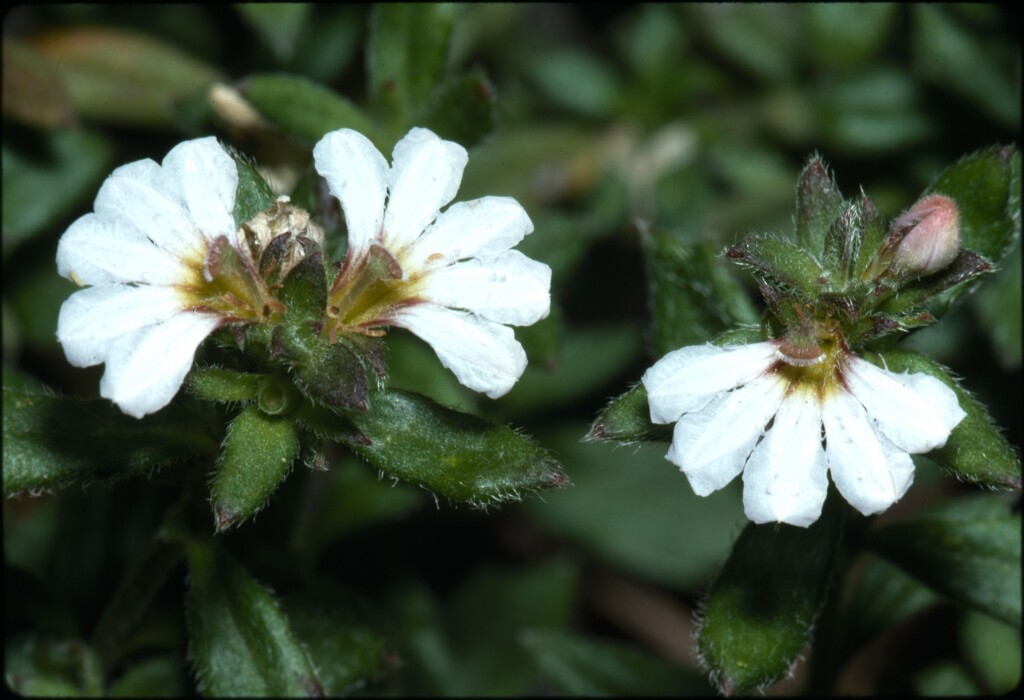Scaevola albida
(Sm.) Druce Small-fruit Fan-flowerProstrate or ascending herb to 50 cm high; stems pubescent with antrorse hairs or glabrous. Leaves shortly petiolate, obovate to elliptic, 0.5–5 cm long, 1–25 mm wide, obtuse or acute, both surfaces appressed-pubescent to glabrescent, margins entire to toothed. Flowers sessile in upper axils, forming terminal leafy spikes to c. 25 cm long; bracteoles narrow-elliptic, 3–9 mm long. Sepals almost free, triangular, c. 0.5 mm long, ciliate; corolla 5–12 mm long, appressed-pubescent outside, sparsely bearded inside, pale blue or white, wings to 1 mm wide; indusium broad-triangular, with a posterior tuft of short white or purplish bristles and short white bristles around orifice. Fruit ellipsoid, 2–4 mm long, rugose, glabrous or pubescent. Flowers mainly Oct.–Jan.
GleP, Brid, VVP, VRiv, GipP, OtP, WaP, CVU, GGr, DunT, EGL, EGU, WPro, HSF, OtR, VAlp. Scattered across southern Victoria, usually on sandy soil in near-coastal scrubs and woodlands, sometimes colonizing bare ground (road embankments etc.).
Some authors recognize 2 distinct taxa within this variable species. Scaevola albida var. pallida differs from the type variety by its generally prostrate habit, glabrous style, shorter and narrower leaves and smaller white or very pale blue flowers. These features are variable, however, and intermediates occur.
Jeanes, J.A. (1999). Goodeniaceae. In: Walsh, N.G.; Entwisle, T.J., Flora of Victoria Vol. 4, Cornaceae to Asteraceae, pp. 589–615. Inkata Press, Melbourne.
 Spinning
Spinning


